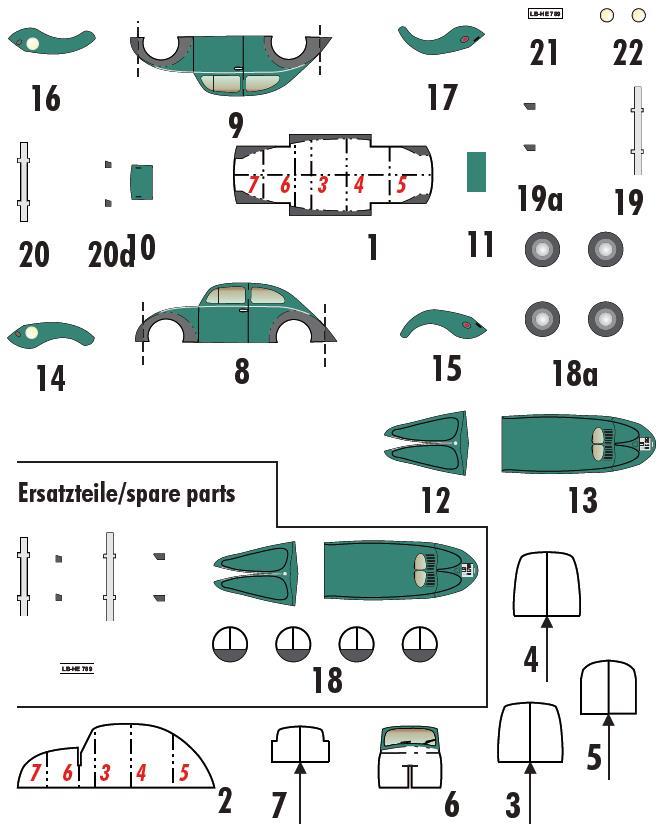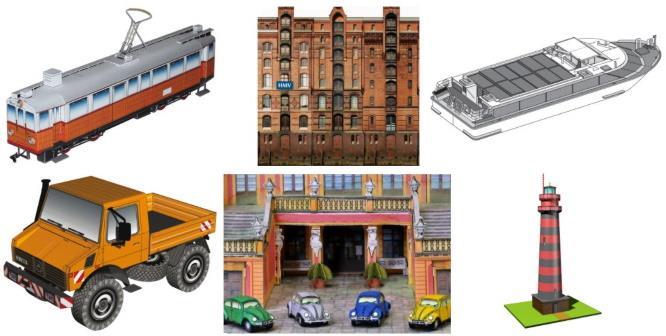Offered by the British website Walden Model Co., this is the miniature paper model of the Cleopatra barge with its precious cargo, the Egyptian obelisk that became known as "Cleopatra's Needle."
The "Cleopatra" was designed and built in 1877 to transport an obelisk from Alexandria to London. This obelisk had been presented to the English nation in 1819 by Mehmet Ali, the viceroy of Egypt, in commemoration of the victories of Lord Nelson in the Battle of the Nile and Sir Ralph Abercromby in the Battle of Alexandria.
The English government, while appreciating the gesture, declined to finance the transport of the gift. Over the years, several schemes were devised to get the obelisk to London, none of which came to fruition. However, in 1877 the necessary elements to undertake the project, namely brains and money, came together in the shape of engineer John Dixon and distinguished and very wealthy Sir Erasmus Wilson.
Dixon devised a plan for a 92-foot long, cylindrical barge that would completely encase the obelisk, to be towed to England by a tug boat. Sir Erasmus, who was a devoted freemason and so had a certain fondness for obelisks agreed to put up 15,000 pounds (about $2,000,000 in today's money) to finance the project.
The barge was built and shipped in sections to Alexandria, where the obelisk lay buried in sand on the beach. As the monument was unearthed, the barge was assembled around it. The giant cylinder was then rolled into the sea. A deck-house, rudder, and mast were fitted, and the little ship was christened Cleopatra.
On September 21, 1877 the tug Olga towed Cleopatra out into the Mediterranean and began the journey back to England. Disaster struck on October 14, 1877. A violent storm caught the ships in the Bay of Biscay. Cleopatra rolled wildly and soon became utterly untenable. Six volunteers from the Olga, including the captain's son, manned a boat to rescue Cleopatra's crew of five and her captain. The boat capsized and all hands were lost. Unawares, the Olga sent another boat, which at length succeeded in taking off her crew.
The barge was cut loose and quickly disappeared from sight. The Cleopatra was believed lost until the Glasgow steamer Fitzmaurice spotted her floating upright and apparently undamaged. Taken in the Spanish harbor of El Ferrol, Cleopatra underwent repairs. The tug Anglia was sent to retrieve her. The tow got underway on January 15, 1878.
Cleopatra arrived at Gravesend, at the mouth of the River Thames, on January 21, 1878. Amid great fanfare the obelisk, no known as "Cleopatra's Needle" was erected on the Thames embankment on September 12, 1878, almost a year after the voyage had begun.
To extract the obelisk, the celebrated little barge that had attracted so much public attention was dismantled and unceremoniously sold for scrap.
Oferecido pelo site britânico Walden Model Co., este é o modelo de papel em miniatura da barcaça Cleópatra com sua preciosa carga, o obelisco egípcio que ficou conhecido como "Agulha de Cleópatra".
A barcaça "Cleópatra" foi projetada e construída em 1877 para transportar um obelisco de Alexandria para Londres. Esse obelisco havia sido presenteado à nação inglesa em 1819 por Mehmet Ali, o vice-rei do Egito, em comemoração às vitórias do Lorde Nelson na Batalha do Nilo e do Sir Ralph Abercromby na Batalha de Alexandria.
O governo inglês, embora apreciasse o gesto, recusou-se a financiar o transporte do presente. Ao longo dos anos, vários planos foram elaborados para levar o obelisco a Londres, mas nenhum deles se concretizou. No entanto, em 1877, os elementos necessários para realizar o projeto, ou seja, conhecimento técnico e dinheiro, se uniram na figura do engenheiro John Dixon e do distinto e muito rico Sir Erasmus Wilson.
Dixon criou um plano para uma barcaça cilíndrica de 92 pés de comprimento que envolveria completamente o obelisco, a ser rebocada até a Inglaterra por um rebocador. Sir Erasmus, que era um devoto maçom e tinha certa afinidade por obeliscos, concordou em fornecer 15.000 libras (cerca de $2.000.000 em dinheiro atual) para financiar o projeto.
A barcaça foi construída e enviada em seções para Alexandria, onde o obelisco estava enterrado na areia da praia. À medida que o monumento era desenterrado, a barcaça era montada ao seu redor. O cilindro gigante foi então rolado para o mar. Uma casa de convés, leme e mastro foram instalados, e o pequeno navio foi batizado de Cleópatra.
Em 21 de setembro de 1877, o rebocador Olga rebocou a Cleópatra para o Mar Mediterrâneo e iniciou a jornada de volta para a Inglaterra. O desastre ocorreu em 14 de outubro de 1877. Uma tempestade violenta atingiu os navios na Baía de Biscaia. Cleópatra rolou violentamente e logo se tornou completamente inavegável. Seis voluntários do Olga, incluindo o filho do capitão, tripularam um barco para resgatar a tripulação da Cleópatra, composta por cinco pessoas e seu capitão. O barco virou e todos os ocupantes foram perdidos. Sem saber disso, o Olga enviou outro barco, que acabou conseguindo resgatar sua tripulação.
A barcaça foi solta e desapareceu rapidamente de vista. Acredita-se que a Cleópatra tenha se perdido até que o vapor Glasgow Fitzmaurice a avistou flutuando ereta e aparentemente intacta. Levada para o porto espanhol de El Ferrol, Cleópatra passou por reparos. O rebocador Anglia foi enviado para resgatá-la. O reboque começou em 15 de janeiro de 1878. Cleópatra chegou a Gravesend, na foz do rio Tâmisa, em 21 de janeiro de 1878.
Entre grandes celebrações, o obelisco, agora conhecido como "Agulha de Cleópatra", foi erguido no cais do rio Tâmisa em 12 de setembro de 1878, quase um ano após o início da viagem.
Para extrair o obelisco, a famosa barcaça que havia atraído tanta atenção pública foi desmontada e vendida sem cerimônia como sucata.




























